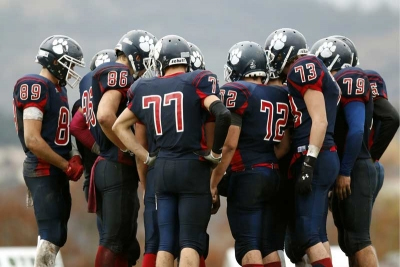An Autobody News reader recently emailed me a question he had about daily release meetings at his shop.
I always like hearing from shops because that’s often where I get ideas for this column. So let’s talk a little about release meetings: when they should be held, who should attend, what should be discussed.
I want to start with the caveat that some people tell me they think release meetings are a waste of time. I disagree. I think they are critical for a shop’s success. And I suspect people who think that probably aren’t leading---or aren’t attending---good release meetings.
When thinking about release meetings, I suggest thinking about a football game. At a football game, the play comes from the sidelines out to the quarterback on the field. The quarterback has 30 seconds to get that play off. So the team huddles so the quarterback can tell everyone the play, and the huddle ends with everyone voicing an enthusiastic “Break!”
That huddle is really what a release meeting is all about for a collision repair facility.
When I had my shops, we held a release meeting every single morning. My team was required to get to work by 7:30 a.m., and at 7:45 a.m., they had to be in uniform. That’s when the meeting began. Not at 7:50 a.m., not even at 7:47 a.m. It began at 7:45 a.m.
Who was there? Everyone. The people who washed cars, the painters, the body techs, the parts manager, the estimators, the customer service reps. Everyone.
Now, I will say I’m currently working with a shop that does $1 million a month in sales. For an organization of that size, it doesn’t make sense to have everyone come together for a single release meeting. But that company is divided into multiple teams, or “cells,” and each of those has its own release meeting with everyone on that team.
In either case, the key purpose of the release meeting is to make sure everyone is on the same page about the vehicles scheduled to be delivered that day, or on either of the next two days. So you’re looking out in advance three days.
We’d discuss if there are any issues with any of those vehicles, in order to take a proactive rather than reactive approach. The parts guy might say, for example, “We have all the parts for these cars, but the taillight for Mrs. Smith’s Toyota won’t be here until 2 p.m. today.”
We’d make sure the painters knew everything that needed to painted that day, and in what order we wanted them painted. We’d let them know what they would be painting tomorrow, so they’d know what to move on to if they got through today’s work early.
We’d make sure the customer service reps had the information they needed in order to communicate with customers.
We’d review any appointments coming in that day, and find out there if there was any equipment that needed repairs or service, or any facility maintenance work needed. We’d make sure any sublet work had been scheduled to be handled by vendors. We’d discuss any warranty or customer request items we needed to process.
We’d talk about who was going to be out on vacation, and make sure their responsibilities were being covered.
As the only time of day when everybody is together, it can be a good time to highlight if it was an employee’s birthday or work anniversary, and give them some high-fives. In any case, try to end each meeting on a positive, enthusiastic note, just like the chant of “break” at the end of a huddle.
Here’s another thing: I don’t think the release meeting should ever last more than 15 minutes. In my shop, we started at 7:45 a.m., and everyone knew we had to be done by 8 a.m. when we opened our doors for business.
A couple of cautions: When I talk to people about their grievances about release meetings, two things are the primary buzzkills. Those who show up on time don’t want to be left standing around, wasting their time, because whoever runs the meeting isn’t there. They also aren’t going to have much tolerance---nor should they---for a meeting leader who isn’t prepared.
So in order to be prepared to lead your 7:45 a.m. release meeting tomorrow, you likely will need to have some other brief, smaller meetings throughout the day. I liked to have a meeting with some key employees right before or right after lunch to make sure we were still on track for the day. I also liked to meet with my paint team at the end of the day to see if everything got accomplished. If it didn’t, I could update their list for the next day before the release meeting.
I’ve got a document that includes a sample SOP for release meetings, and highlights the topics that should be covered.















Mike Anderson